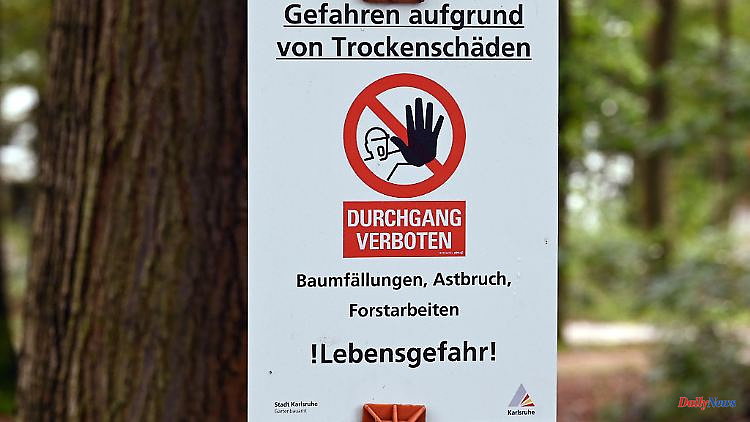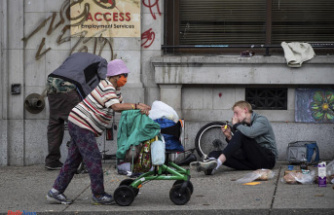Trees in the city are habitats for birds and insects, they provide shade, cool the air and produce oxygen. But the drought weakens the trees, making them vulnerable and a security risk. What are cities doing about it?
Stuttgart (dpa / lsw) - Drought and pests have been putting a lot of strain on the trees in the cities in the south-west for years. The municipalities react - for example with new species that are planted. This means a lot of work for the city administration, because it is also a matter of safety: if diseased trees fall or branches fall, this can be dangerous for passers-by. And so the street trees are particularly cared for, cared for - and also felled.
Were the trees in the cities able to recover somewhat over the winter?
In most cases, this will only really become apparent in spring and summer. In Mannheim and Karlsruhe there was at least sufficient precipitation, according to the city administrations there. "Regardless of this, it can be assumed that the drought of the past summer has caused permanent damage to some of the trees," a spokesman for the city of Mannheim told the dpa. "The concrete extent of the damage will become apparent in the coming years." In principle, older trees could withstand a single dry summer. "The more dry summers in a row, the greater the risk that trees will be damaged."
In Heidelberg, for example, it was too dry even in winter. Whether this will affect the trees can only be assessed in early summer.
Moths and fungi - What still troubles the trees
With the drought, the trees lose vitality - and are thus weakened and more susceptible to pests. A "permanent problem" in Mannheim and Freiburg, for example, is the chestnut leaf miner. In Heidelberg and Karlsruhe, the experts primarily found fungal infestation. A spokesman for the city of Karlsruhe explained that the beech coalberry on beech trees and the Diplodia dieback on pine trees caused major losses in the population.
What do the fragile trees mean for the cities in the southwest?
"All around 90,000 trees are checked regularly and, if necessary, cared for, cut back or felled if they are no longer stable," said a spokesman for the city of Mannheim of the German Press Agency. "The drought in recent years, together with the increased incidence of pests, has led to a considerable increase in the effort involved in inspection and tree care."
In Karlsruhe, the experts from the Horticultural Office estimate that the number of fellings has increased by up to ten percent annually over the past four years. Between October 2022 and February 2023 alone, around 1,500 trees on streets and in parks across the city had to be felled.
In Freiburg, too, attempts are being made to minimize risks with regular checks. However, according to the city's garden and civil engineering office, there cannot be absolute security against broken branches. "There will probably be an increasing number of fellings for the purpose of traffic safety when the effects of the past hot summer become visible." It's similar in Heidelberg - it's a balancing act, as a spokeswoman describes: On the one hand, safety, while at the same time the city is very keen on preserving trees for as long as possible.
Preventing total failures - This is how the cities take countermeasures
In order to make planting fit for the future, the cities have already changed course and are planting a few other species. Based on the experience of the past few years, individual tree species would no longer be replanted, for example in Karlsruhe. "But these are only a few. The strategy of the Horticultural Office is to plant as many different and climate-resilient tree species as possible in order to minimize the total loss of tree species."
All cities are now trying out which species might grow and thrive well, which have so far been more native to the Mediterranean region and are better able to cope with climate change.
In Mannheim, for example, they are currently testing the sessile oak, the Turkey oak and the flowering ash, all of which are more native to southern Europe. But the soil and the so-called tree quarters in which the trees stand are also important. A spokesman for the city of Mannheim explained that care is taken to ensure that materials are used that store water better and that there is more space in the ground so that the roots can develop better.












